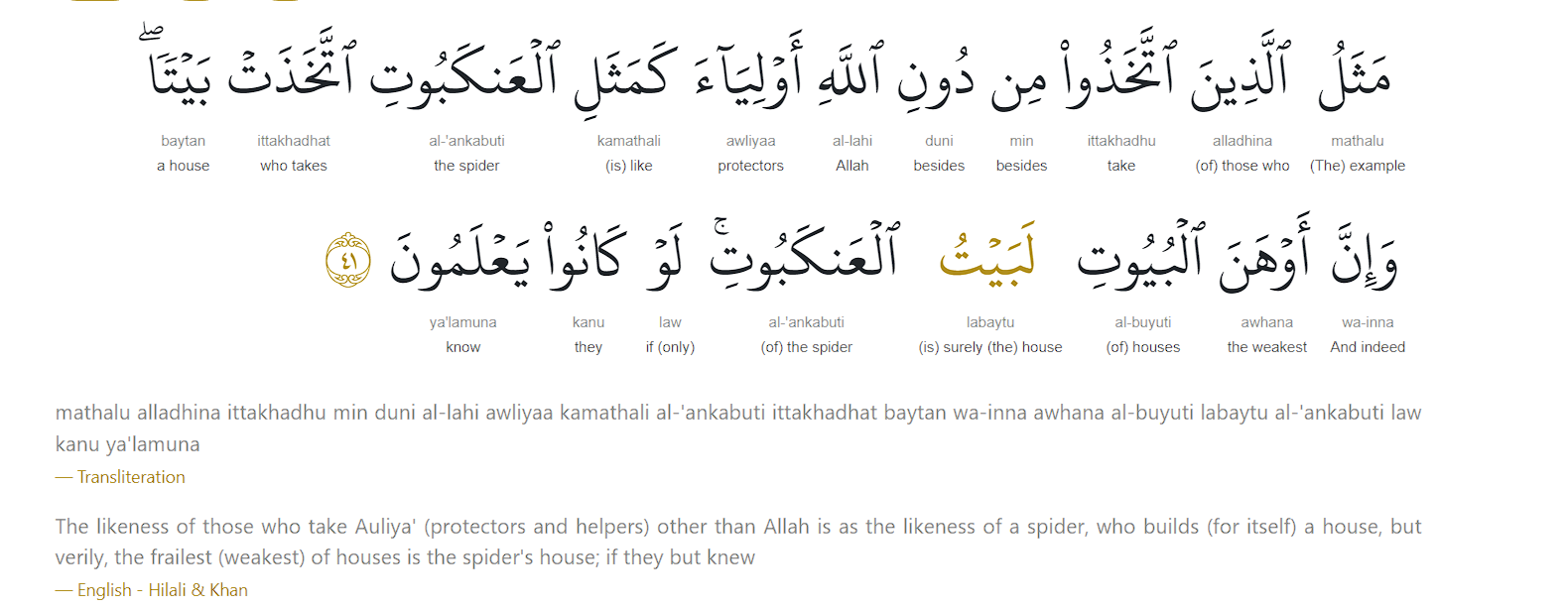AL ANKABOOT (THE SPIDER): AYAT 41 (QURAN 29:41)

Spiders are known for several defining characteristics — their numerous legs , numerous eyes, and of course their ability to create intricate webs. Spider webs have existed for at least 100 million years, as witnessed in a rare find of Early Cretaceous amber from Sussex, in southern England. What has not been known until recently through arachnological literature – is the fact that it is predominantly the female spider that generates the intricate webs we know so well.
This is due to several factors. Female spiders tend to be a lot larger than male spiders due to their obligation to birth as many babies as possible. This large size gives them the required energy and physical ability to construct relatively large webs. Additionally, many female spiders use their large web to catch/store prey that they can share with their spiderlings and, in some cases, their male counterpart.
Males generally do not create webs. If a male spider does create a web – they generate smaller webs because of their (typically) smaller size and because they don’t have the time to create something so impressive. Male spiders have the primary objective of finding and mating with a female, and they spend a significant amount of time trying to do just that. Therefore, they’re not often in one place for long enough to create a large web, or they simply don’t have the ability to make one.
